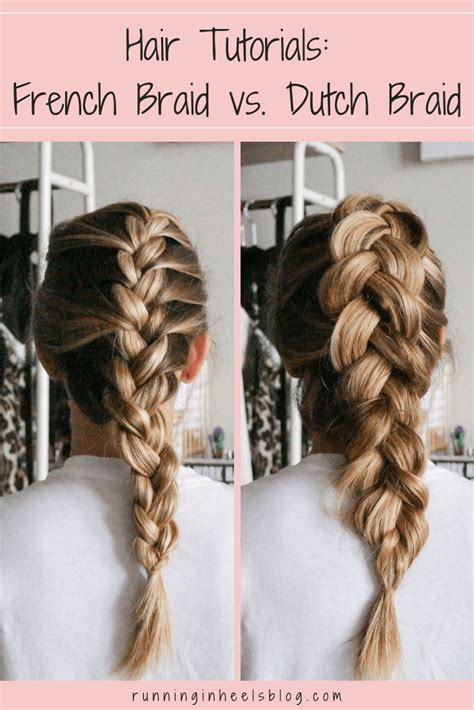Introduction
Braids are a versatile and beautiful way to style your hair. They can be worn in a variety of ways, from simple and elegant to intricate and eye-catching. Two of the most popular braiding techniques are Dutch braids and French braids. Both techniques create a similar look, but there are some key differences between them.

What is a Dutch Braid?
A Dutch braid is a type of inverted braid. It is also known as a reverse braid or reverse French braid. To create a Dutch braid, you start by dividing your hair into three equal sections. You then cross the right section over the middle section, and then cross the left section over the middle section. You continue this process, crossing the outer sections over the middle section until you reach the ends of your hair.
What is a French Braid?
A French braid is a type of three-strand braid that is created by adding hair from the sides of your head as you braid. To create a French braid, you start by dividing your hair into three equal sections. You then take a small section of hair from the left side of your head and cross it over the middle section. You then take a small section of hair from the right side of your head and cross it over the middle section. You continue this process, adding hair from the sides of your head as you braid, until you reach the ends of your hair.
Dutch Braids vs French Braids: The Key Differences
The main difference between Dutch braids and French braids is the way the hair is crossed. In a Dutch braid, the outer sections are crossed over the middle section. In a French braid, the outer sections are crossed under the middle section. This difference in crossing creates a different look. Dutch braids are more raised and voluminous, while French braids are flatter and more intricate.
Another difference between Dutch braids and French braids is the way the hair is added from the sides. In a Dutch braid, the hair is added from the sides of the head in a straight line. In a French braid, the hair is added from the sides of the head in a diagonal line. This difference in adding hair creates a different look. Dutch braids have a more clean and defined look, while French braids have a more messy and romantic look.
Which Braid is Right for You?
The best way to decide which braid is right for you is to experiment with both techniques. Try creating a Dutch braid and a French braid on different sections of your hair. Once you have tried both braids, you can decide which one you prefer.
If you are looking for a braid that is raised and voluminous, then a Dutch braid is a good option. If you are looking for a braid that is flatter and more intricate, then a French braid is a good option.
Pros and Cons of Dutch Braids and French Braids
Dutch Braids
-
Pros:
- Raised and voluminous
- Clean and defined look
- Easy to create
-
Cons:
- Can be tight and uncomfortable
- Can be difficult to create on long hair
French Braids
-
Pros:
- Flatter and more intricate
- Messy and romantic look
- Versatile
-
Cons:
- Can be time-consuming to create
- Can be difficult to create on thick hair
Conclusion
Dutch braids and French braids are both beautiful and versatile braiding techniques. The best way to decide which braid is right for you is to experiment with both techniques. Once you have tried both braids, you can decide which one you prefer.
